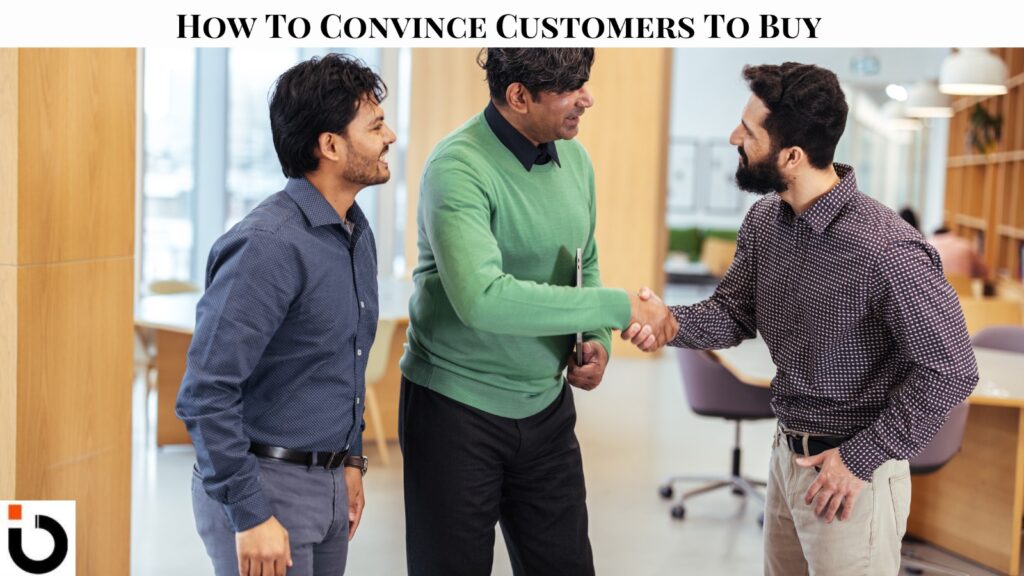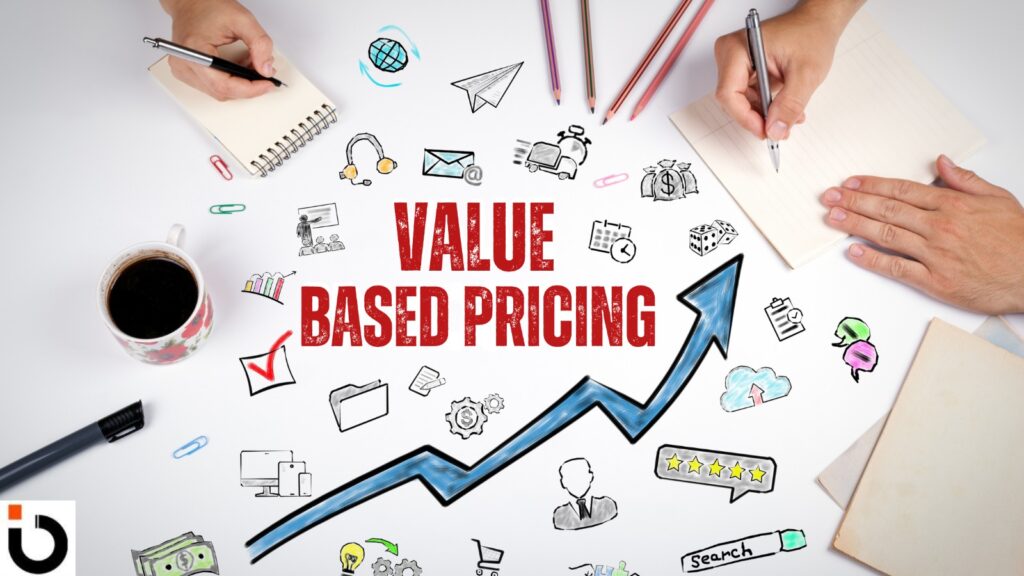Winning customers over isn’t just about selling—it’s about understanding what they need and showing them why your product or service is the perfect solution. Whether you’re a small business owner or an experienced sales pro, mastering the art of persuasion is key to boosting sales. In this guide, we’ll break down powerful strategies to help you convince customers, connect with potential buyers, and turn interest into action.
If you’re in sales, you’ve probably asked yourself countless times: How do I convince a customer to buy? Many professionals search for the perfect pitch or a foolproof script, but the truth is, effective selling is more about connection, trust, and value than a one-size-fits-all approach. While every customer interaction is unique, there are proven strategies that can increase your chances of successfully convincing a customer to make a purchase. Let’s dive into the strategies that actually work!
Table of Contents
ToggleUnderstanding the Importance of Convincing People to Buy
Convincing people to buy your product or service is more than just making a sale. It’s about building trust, establishing a connection, and creating an enduring relationship with your customers. It’s about demonstrating the value you can provide and how your solution can make their lives better.
Every interaction with a potential customer is an opportunity to convince them to buy. From the initial contact to the final sale, every step has to be meticulously planned and executed.
Sales is A Unique Blend of Science and Art
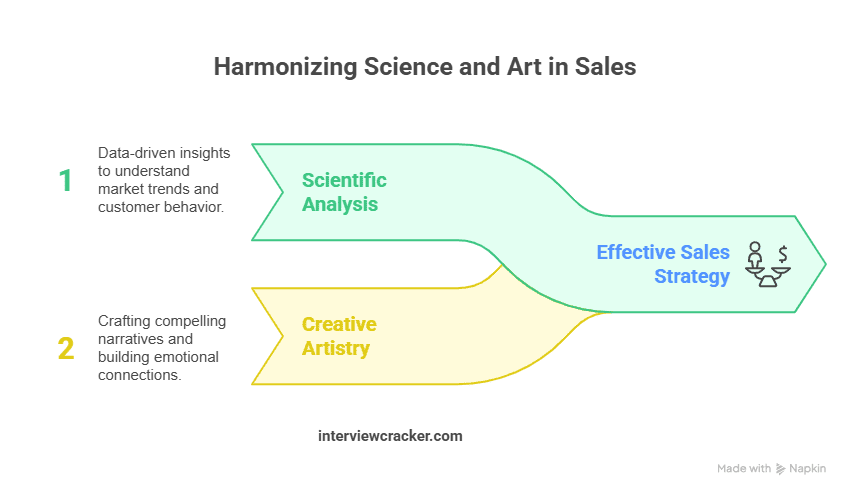
Convincing people to buy is both a science and an art. It’s a science because it involves understanding human psychology, studying market trends, and applying proven sales techniques. It’s an art because it requires creativity, intuition, and the ability to connect with people on an emotional level.
In this article, we will explore 21 effective techniques that can help you master the art of persuasion and close deals with confidence. Here, we’ll explore these foolproof ways to convince people to buy your product or service. These strategies are derived from the experiences of successful businesses and sales professionals across various sectors.
21 Strategies to Successfully Convince/ Persuade People to Buy
Before answering these questions “how to convince a customer for sales?” , “how to convince a customer to buy your product?” lets understand why customers buy.
1. Understand customer needs
2. Highlight the Benefits, Not Just Features
3. Build trust and credibility
4. Full Disclosure: Keep the Customer Informed
5. Speak Simply and Avoid Jargon
6. Showcase Your Unique Selling Proposition (USP)
7. Leverage the Power of FOMO (Fear of Missing Out)
8. Create a Sense of Urgency But Don’t Rush The Process
9. Provide Options, But Not Too Many
10. Provide demonstrations or samples
11. Use persuasive storytelling
12. Leverage Customer Reviews and Testimonials
13. Target a Specific Audience
14. Create Engaging Content Around Your Product
15. Focus on Branding
16. Provide excellent customer service
17. Offer social proof
18. Offer guarantees or warranties
19. Personalize your approach
20. Anticipate Objection
21. Follow up and maintain relationships
1. Understand Customer Needs
Take the time to understand your customers’ wants, needs, and pain points. This will help you tailor your approach to address their specific concerns effectively.
One major thing that can turn off a prospect is being pushy without understanding their need clearly.
Rather tell them how they can use the product to solve their problem, keep their concern first, and give your products and services as a solution to their problems. This way you can, show the prospect the value of your product and service without coming off as pushy and annoying.
If you are selling expense and reporting software for small businesses and they struggle with how manual and continuous logging their expenses can become lethargic. So, this is where your product comes in, the automated features of your software, and the time-saving capacity of your product or service. You need to be prepared for how to close the deal.
2. Highlight the Benefits , Not Just Features
Instead of focusing solely on your product’s features, emphasize the benefits it can provide to customers. For example, instead of stating that your laptop has a powerful processor, explain how it can help users work more efficiently and swiftly. This approach shows customers how your product can make their lives better, making it more convincing.
3. Build Trust and Credibility
Establishing trust is crucial. Provide clear and accurate information about your product or service, offer testimonials or case studies, and demonstrate your expertise in the industry. Trust lays the foundation for successful persuasion. Once you start finding answer for how to convince a customer to stay with you, you will get how to build trust and credibility with the customer.
4. Keep The Customer Informed
Transparency is key when trying to convince people to buy. Ensure that your customers have all the necessary information about your product, including its features, price, delivery charges, terms and conditions, and return policy. This approach builds trust and makes your customers feel valued and respected.
5. Speak Simple and Avoid Jargon
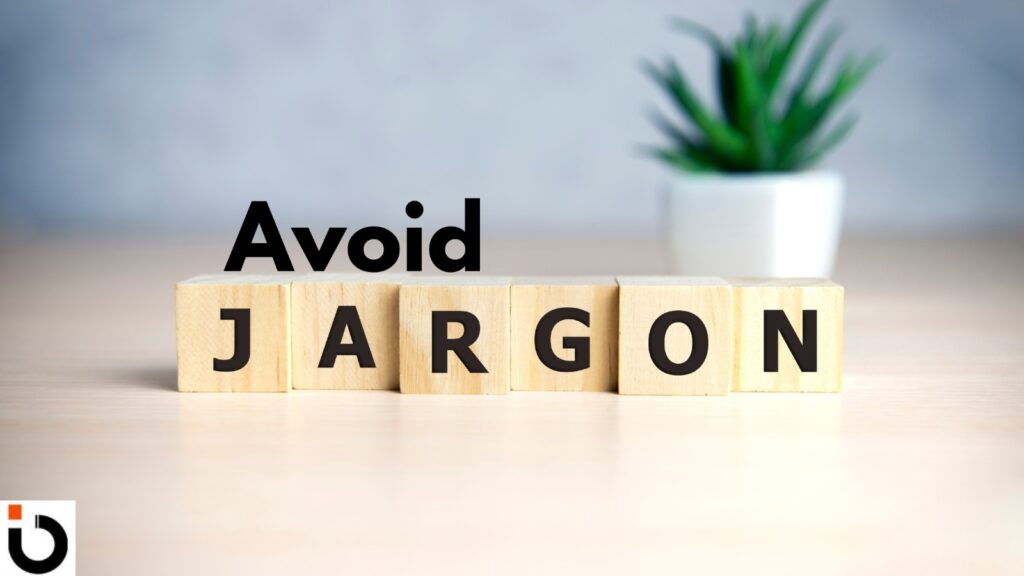
While it’s important to demonstrate your expertise and knowledge, avoid using industry jargon or complex language that might confuse your customers. Instead, use simple, clear language that your customers can understand easily. This makes your product more approachable and easier to sell.
6. Showcase Your Unique Selling Proposition (USP)
Your USP is what sets you apart from your competitors. It’s the unique feature or benefit that your product offers, which other products in the market don’t. Highlighting your USP can make your product more attractive and convincing to potential customers.
7. Leverage the Power of FOMO(Fear of Missing Out)
FOMO is a powerful psychological trigger that can be used to convince people to buy. Highlight the exclusivity of your product, the limited availability, or a special offer that’s about to end. This strategy can motivate customers to make a purchase before they miss out on a great deal.
8. Create a Sense of Urgency But Don't Rush The Process
No one is capable of making the right decision when they are in a hurry. We get it that you have targets to meet on regular basis, but your persuasion should feel natural to the prospect. No one should feel pressured or rushed to sign on the dotted line.
This doesn’t mean that you don’t give them a slight sense of urgency by attempting them with a special price or a freebie. Encourage customers to take action by creating a sense of urgency. Limited-time offers exclusive deals, or time-limited bonuses can motivate customers to make a purchase sooner rather than later. Towards the end, the only important thing is to be on the same page as a prospect. If you are going through a sales process assuming the prospect is ready to close when S/he is only in the consideration stage. Therefore, take your time
Implementing these tactics in your future calls to close deals, will make you feel more comfortable and confident. And this will help in making the transition from a lead to a customer. The walk into a sales conversation with your potential customer will be easy. The goal is to make your prospect feel that your offerings are the best solution for their needs.
9. Provide Options, But Not Too Many
Giving your customers options can make your product more appealing. However, providing too many options can overwhelm your customers and make it harder for them to make a decision. Striking a balance is key.
10. Provide Demonstration or Sample
Allow customers to experience your product or service firsthand. Offer free trials, product demonstrations, or samples to showcase its value and build confidence in its quality.
11. Use Persuasive Storytelling
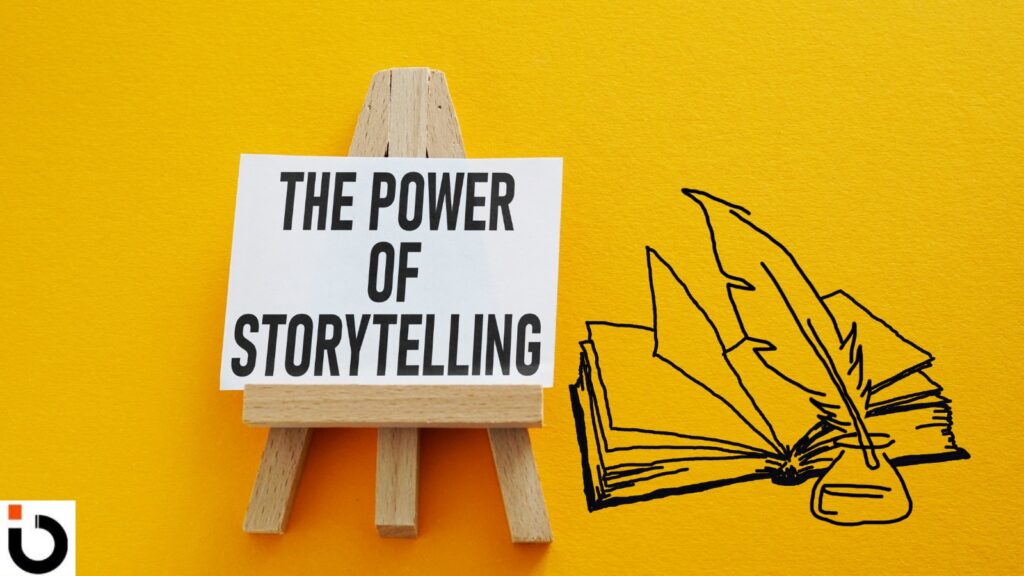
Tell compelling stories that connect with your customers on an emotional level. Use narratives that highlight the benefits of your product or service and how it has positively impacted other customers’ lives.
This is what it boils down to:
Why should people choose you? To what extent do you stand out from the competition?
To increase sales, highlight what makes you different from the competition.
Suggested Read: Best Sales Pitch
12. Leverage Customer Reviews and Testimonials
Customer reviews and testimonials can be incredibly convincing. They provide social proof and reassure potential customers that your product is worth buying. Make sure to highlight positive reviews and testimonials in your marketing materials and on your website.
13. Target a Specific Audience
Instead of trying to appeal to everyone, focus on a specific target audience that’s likely to benefit the most from your product. Understanding your audience’s needs, preferences, and pain points can help you tailor your sales pitch and make it more convincing.
14. Create Engaging Content Around your Product
Creating engaging content around your product can help educate your customers, demonstrate the value of your product, and convince them to buy. This could be blog posts, videos, infographics, or social media posts.
15. Focus on Branding

Building a strong brand can make your product more recognizable, enhance its perceived value, and make it more convincing to potential customers. Invest in high-quality branding that reflects the quality and value of your product.
16. Provide Excellent Customer Service
Deliver exceptional customer service at every touch point. Respond promptly to inquiries, be helpful and friendly, and go the extra mile to meet customer expectations.
Use a concrete case study to illustrate the process of handling customer complaints. Inquire as to whether or if a customer had any reservations regarding a recent purchase and what they were. Most likely, they’ll give another perspective.
A customer’s doubts about purchasing your goods increase as their price rises. If your rivals do a better job of answering these concerns, customers will go with them instead of you.
17. Offer Social Proof
People are more likely to trust and purchase from businesses that have positive reviews, testimonials, or endorsements. Highlight customer success stories, showcase positive feedback, and leverage social media to demonstrate your brand’s popularity and to showcase the satisfaction and success of previous customers. Social proof is a powerful persuader.
18. Offer Guarantees or Warranties
Providing guarantees or warranties can reduce the perceived risk for customers. It shows your confidence in your product or service and gives customers peace of mind.
What is the very first thing that springs to mind when you hear the term “risk reversal?”
Most likely, there is a refund policy in place.
The majority of risk reversals take this form. And although it does reverse the odds in your favor, it’s hardly the best possible outcome.
After everything is said and done, people want more than just their money back. Simply following through on what you’ve promised is what they care about most. They really want is for you to grasp what dangers they are in.
19. Personalize Your Approach
Tailor your messages and offers to the individual customer. Use data and insights to provide personalized recommendations or exclusive offers based on their preferences and past purchases.
If you are looking to persuade a prospect to consider your product, try not to stick to your generic script, it makes you sound rehearsed, or the message that needs to reach does not go out. They might not find a piece of relevant information and whatever you say will not make an impact and persuade the prospect to buy your product and service
This does not mean that you speak to them, that they are long-lost, friends. No, it just means that you need to adjust your message in such a way that your message must be relevant to what the prospect is interested in.
Customers are more likely to buy if you can establish a personal connection with them. Be natural and act like a human being.
If you are reading from scripts the prospect knows the vibe, that you are only interested in selling the products and services and not giving a solution.
A prospect will buy only when you can build a rapport with the customer. This bond is not formed if your message is not personalized.
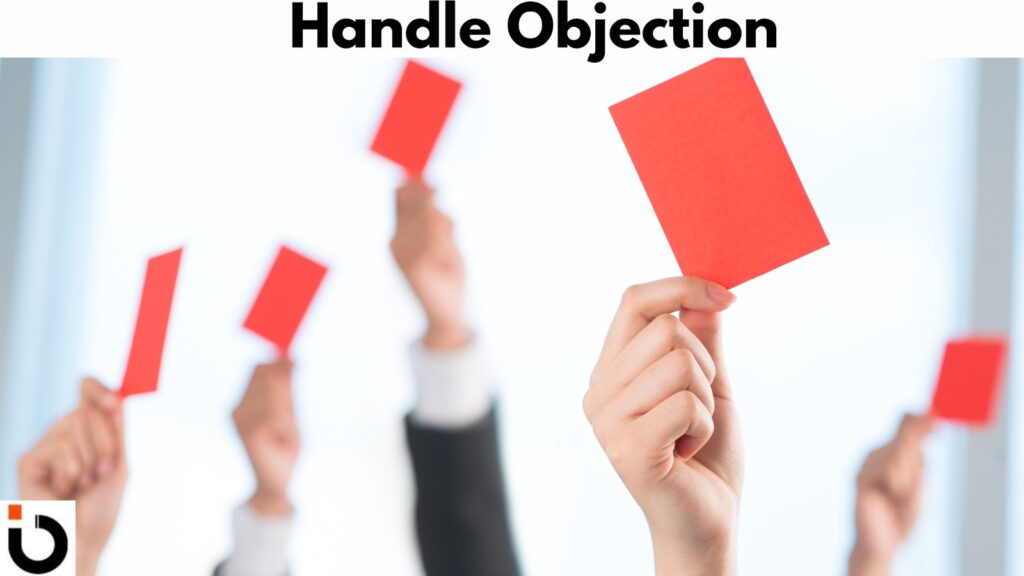
20. Anticipate Objection
During the sales process, customers may raise objections or concerns. Anticipate these objections and prepare effective responses to address them. Listen actively to the customer’s concerns, empathize with their viewpoint, and provide thoughtful solutions or explanations. By proactively handling objections, you can alleviate doubts and reinforce the customer’s confidence in their decision to move forward.
Imagine this scenario: you’ve meticulously prepared for your sales call, understanding your prospect’s needs and wants inside out. Armed with your well-organized notes, you approach the conversation with confidence, ready to seal the deal. However, as the call unfolds, an unexpected curveball is thrown your way—a prospect poses a question you hadn’t anticipated or factored into your preparations.
It can be a nightmare, leaving you feeling unprepared and off balance. But fear not! Embrace this situation as a valuable opportunity for growth and learning. To enhance your ability to convince customers, it’s crucial to adopt a proactive approach.
21. Follow up and Maintain Relationships
Stay engaged with your customers even after they make a purchase. Follow up with them to ensure their satisfaction, offer additional support, and keep them informed about new products or services.
Remember, building long-term customer relationships is crucial, so focus on delivering value, addressing their needs, and providing exceptional experiences throughout their journey with your brand.

Allow Your Prospect to Make a Decision
Your end goal is to sell your product. Not because you pressured them to buy it but rather because they genuinely wanted to buy it.
To be honest, no one likes to be told what to do and what not, and this includes your prospects. To do this let the ball be in the prospect’s court. Don’t try to convince or push customer persuasion a customer on a call.
Avoid being too direct in your approach. All you got to do is, give them the context and give them information that shows that buying from you is the best option for them.
But yes, remember to remind your prospect that ultimately it is their decision and the purchase is truly their choice throughout the session.
How to convince a customer to buy your product examples:
Convincing a customer to buy your product often involves effective communication, emphasizing benefits, and addressing their needs. Here are some examples:
- Understanding Needs: “I noticed you mentioned that your current software is causing delays. Our product is designed to significantly increase efficiency, reducing these delays and saving you time and money.”
- Highlighting Benefits: “Our smartphone has a long-lasting battery, so you won’t have to worry about frequent recharging. This means you can stay connected on the go without interruptions.”
- Providing Evidence: “Many of our customers have experienced a 30% increase in website traffic within just three months of using our SEO services. Here are some case studies that demonstrate this.”
- Offering a Solution: “I understand that security is a top concern for your business. Our advanced encryption technology ensures that your data is protected at the highest level, providing you with peace of mind.”
- Limited-Time Offer: “If you decide to purchase our service today, we’re offering a special discount that will save you 20% on the annual subscription. This offer is only available for a limited time.”
- Testimonials and Reviews: “Our customers have consistently given our product a 4.9 out of 5-star rating. Here are a few testimonials from satisfied clients who have benefited from our product.”
- Money-Back Guarantee: “We are so confident in the quality of our product that we offer a 30-day money-back guarantee. If you’re not satisfied, you can return it for a full refund.”
- Personalization: “Based on our discussion, it seems that the customizable features of our product would align perfectly with your specific needs. We can tailor it to suit your requirements.”
- Urgency: “Our inventory is running low, and we’ve had a lot of interest lately. If you want to secure your product, it’s important to make a decision soon to avoid missing out.”
- Building Trust: “We have been in business for 20 years and have served thousands of satisfied customers. Our reputation for quality and customer service is well-established.”
Remember, the approach should align with the customer’s specific situation and needs. Effective communication and a customer-centric focus are key to successful sales conversations.
Convincing Skills in Sales
Effective salespeople possess a range of convincing skills that enable them to build rapport, understand customer needs, and ultimately persuade prospects to make a purchase. Here are some key convincing skills in sales:
- Communication Skills:
- Active Listening: Understanding customer needs and concerns by actively listening to them.
- Clear Articulation: Clearly expressing ideas and product benefits to customers.
- Product Knowledge:
- In-depth Understanding: Having a comprehensive knowledge of the product or service being sold.
- Highlighting Features and Benefits: Articulating how the product features fulfill customer needs and provide benefits.
- Empathy:
- Understanding Customer Perspective: Putting oneself in the customer’s shoes to better understand their challenges and motivations.
- Tailoring Solutions: Offering solutions that address specific customer needs and pain points.
- Building Rapport:
- Establishing Trust: Building trust by being genuine, reliable, and transparent.
- Creating Connection: Establishing a personal connection with the customer.
- Questioning Skills:
- Asking Open-ended Questions: Encouraging customers to share more information, allowing for a deeper understanding of their needs.
- Probing for Pain Points: Identifying challenges or issues the customer may be facing.
- Objection Handling:
- Anticipating Objections: Being prepared for potential objections and having well-thought-out responses.
- Turning Objections into Opportunities: Addressing objections positively and using them as opportunities to provide additional information.
- Confidence:
- Believing in the Product: Projecting confidence in the product or service being sold.
- Self-assurance: Having confidence in one’s ability to meet customer needs.
- Adaptability:
- Flexibility: Adapting to different customer personalities and adjusting the sales approach accordingly.
- Problem-solving: Quickly finding solutions to unexpected challenges.
- Closing Skills:
- Trial Closes: Testing customer readiness throughout the sales process.
- Asking for the Sale: Clearly and confidently asking the customer to make a purchase.
- Follow-up Skills:
- Persistence: Following up with leads and prospects in a persistent, yet respectful manner.
- Building Long-Term Relationships: Focusing on building relationships beyond the initial sale for repeat business and referrals.
- Time Management:
- Efficiency: Managing time effectively to prioritize high-potential leads and opportunities.
- Timely Follow-ups: Ensuring timely follow-ups to maintain momentum in the sales process.
These convincing skills, when combined, help sales professionals build trust, understand customer needs, and guide prospects through the decision-making process. Adaptability and continuous improvement are also crucial, as the sales landscape is dynamic and constantly evolving.
A Few Examples : How to Convince Customers for Sales
Convincing Customers About Price Increases
Be transparent and frame the price increase as a value upgrade. Explain added benefits, improved quality, or rising operational costs. Use phrases like “to maintain quality service” or “to continue delivering excellence.”
How to Convince the Client That Your Design Is Perfect
Present your design with clarity, showcasing how it aligns with their brand goals, audience, and usability needs. Use mockups, data, or competitor comparisons to build credibility and gain trust.
How to Convince Someone to Buy a Warranty
Focus on risk reduction and peace of mind. Highlight real scenarios where the warranty saves money in the long run and position it as a smart, protective investment.
How to Convince a Customer to Buy a Cell Phone (Example)
Emphasize unique features like battery life, camera quality, or speed that match their daily needs. Use real-life benefits like “perfect for work calls” or “ideal for capturing travel memories.”
How to Convince a Customer to Buy a More Expensive Product
Shift focus from price to value. Highlight long-term benefits, better durability, added features, and how it solves more problems than the cheaper alternative.
Suggested Read: Value-Based Pricing
How to Get People to Buy from Your Website
Build trust with clear product pages, customer reviews, secure checkout, and fast delivery options. Use persuasive CTAs and urgency (e.g., limited-time offer) to drive conversions.
How to Convince a Customer to Make a Payment
Gently remind them of the value delivered and offer flexible payment options if needed. Maintain professionalism, and use polite urgency like “to avoid delays in service.”
Convincing Customers to Buy Extra Goods or Expensive Merchandise Is Known As
This is referred to as upselling or cross-selling—strategies that increase the average order value by offering relevant upgrades or complementary products.
How to Convince a Customer to Buy an Expensive Product
Use storytelling and emotional appeal. Explain how the product improves their lifestyle, lasts longer, or saves money over time. Reinforce exclusivity and quality.
FAQs On Convincing a Customer
How to Convince Customer in Sales?
To convince customers in sales, focus on understanding their needs, building trust, and providing clear value propositions tailored to their specific situation.
Every customer is unique, so adapt your approach to the specific needs and preferences of each individual. Building and maintaining long-term customer relationships should also be a goal, as repeat business and referrals can be very valuable in sales.
How to Convince Customer to Buy your Product? | How to Convince Customer to Buy for Sales?
To convince a customer to buy your product, clearly communicate:
- how it addresses their specific needs,
- highlights its unique benefits,
- offers value, and
- builds trust through transparent and honest interactions.
How to Convince Customer on Call?
To convince a customer on a call you need to take care of the following things:
- be well-prepared,
- listen actively,
- address their needs,
- highlight the benefits,
- provide evidence or testimonials, and
- build rapport and trust through effective communication.
How to Answer “How to Convince Customer” Interview Question?
In an interview, respond by emphasizing the importance of
- understanding customer needs,
- building trust,
- providing value, and
- effective communication to convince customers.
You have sold a product to a customer how will you convince them to buy an extended warranty?
To convince a customer to buy an extended warranty, emphasize
- cost savings,
- peace of mind, and
- the added protection it offers for their newly purchased product.
Conclusion
You might feel more at ease and confident while making sales calls if you use these strategies. Additionally, this will facilitate the process of converting a lead into a customer. Persuading customers to close a deal requires a combination of understanding their needs, effective communication, building trust, and addressing objections.
By employing these strategies, you can enhance your persuasive abilities and increase your success rate in closing deals. Remember, genuine empathy, transparent communication, and a focus on delivering value are the keys to becoming a master persuader.
Mastering the art of customer persuasion is not just about smart tactics—it’s about consistency, empathy, and understanding what truly drives people to say “yes.” Even if every customer doesn’t convert immediately, building resilience in your sales approach ensures you stay confident, adapt to feedback, and keep improving your strategy. Remember, the most successful sellers are those who bounce back, refine their pitch, and keep showing up with value.

